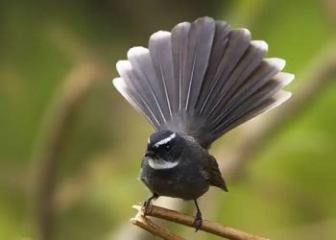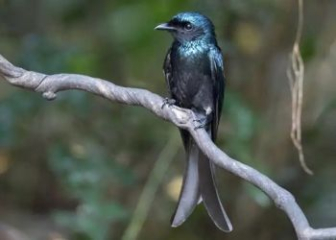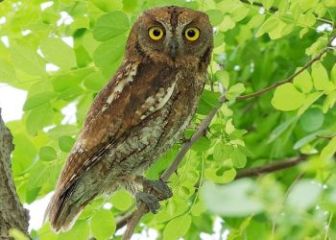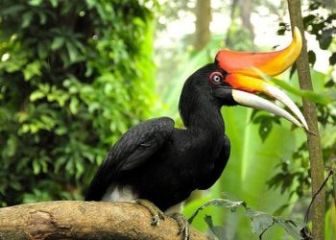Penguin - Super cute flightless bird
Blog | by
Penguins are a group of flightless seabirds that live only in the Southern Hemisphere and have a thick layer of feathers and fat on their bodies to retain heat and keep warm.
When it comes to the cutest birds on the planet, everyone probably thinks of penguins, right? This is a group of birds belonging to the Spheniscidae that cannot fly but in return can swim and dive very well. Besides, they also have a cute appearance with a super adorable waddling gait.
In today's article, let's nicebirds learn in detail about the origin, habits and some of the most popular penguin subspecies today !
Origin and distribution of penguins
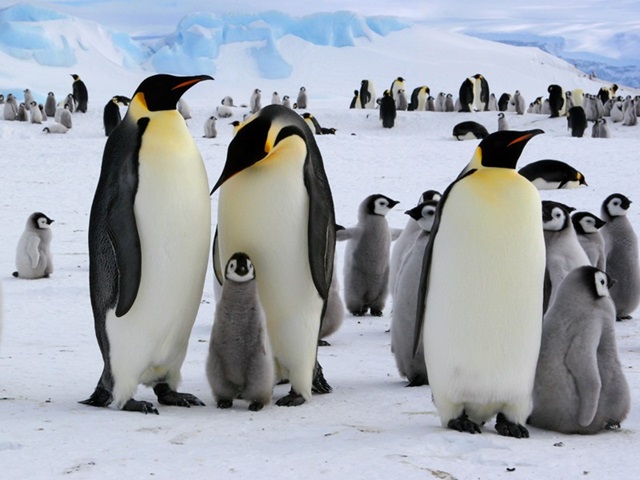
Learn about the origins of penguins.
Penguins, also known as winged penguins, are the common name for a group of flightless water birds belonging to the order Sphenisciformes, family Spheniscidae. Currently, penguins only live in the Southern Hemisphere, mainly distributed in coastal areas and islands such as Antarctica, South America, New Zealand, Australia, South Africa,...
The ancestors of penguins appeared about 60 - 70 million years ago, at the end of the Cretaceous period - after the dinosaurs became extinct.
Although penguins belong to the bird class - Ave, they cannot fly at all because their wings have evolved, instead they have the ability to swim and dive superiorly.
General characteristics of penguin body
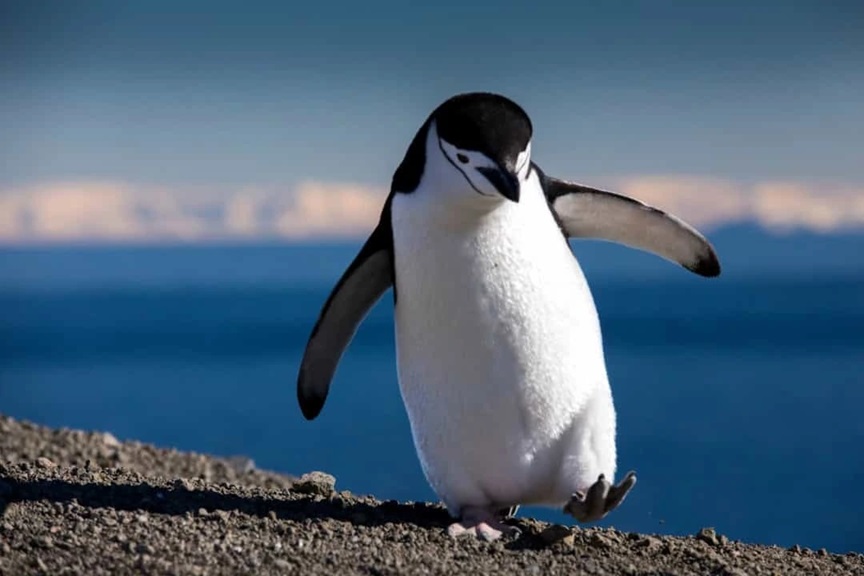
A penguin with a waddling gait.
Penguins are a group of flightless seabirds, known for their unique, cute appearance, thick, insulating feathers, and excellent swimming ability. Let's learn some common morphological characteristics of penguins to understand more about them.
Size & shape :
- Weight: From 1 kg - 40 kg, depending on species
- Height: From 30 - 120 cm
- Slim, diamond-shaped body reduces drag in water when swimming
- When on land, they maintain an upright posture and characteristic waddling gait.
Head & Beak :
- Round head, moderate size
- Straight, sharp, strong beak
- They have no teeth but have many small horny spines in their mouths to help them hold food tightly.
Eyes - ears :
- Large eyes, very good vision, especially when moving in water
- Has ears but no external ear flap, just a small ear hole located behind the eye, hidden under thick fur
Wings :
- Evolved into swimming fins, unable to fly
- Strong muscles, when underwater, act like a real oar
- Wings cannot fold like other common birds
Hair :
- Has a thick, short coat that retains heat well
- Usually the back is dark and the belly is white.
- Every year, penguins will change their feathers periodically once, called "molting".
Skin & fat :
- Underneath the skin is a super thick layer of fat, which retains heat and helps penguins float easily on the water surface.
- For some penguin species living in tropical regions such as the Galápagos, the fat layer will be thinner.
Legs - tail :
- Short legs, slanted backwards, webbed feet
- Waddling gait due to short, inflexible legs
- The tail is short and stiff, helping the bird keep balance.
Penguin Characteristics & Behavior
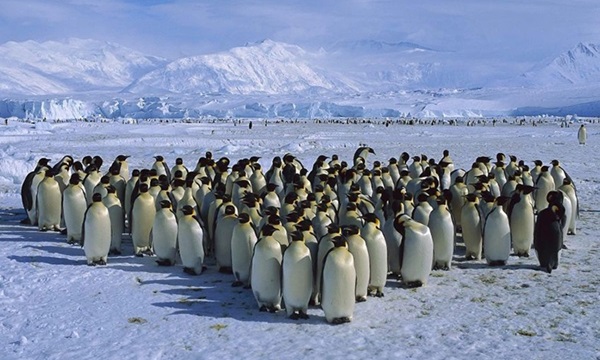
The penguins gathered in a large flock.
Penguins have many distinct habits and behaviors, demonstrating adaptation to cold habitats and underwater life. Let's learn more about them below.
Live in the herd
Penguins are very social, they always live in large flocks of several dozen to thousands of individuals. Living in large flocks not only helps them keep warm, increase their defense ability and make it easier to find a mate for reproduction.
Excellent swimming & diving ability
Although they are birds, penguins cannot fly, but in return they have excellent swimming and diving abilities. Thanks to the evolutionary process, their wings are used as paddles to help penguins swim at high speeds of 10 - 15 km/h, and some species can even reach 36 km/h. In addition, penguins are also capable of diving very deep from 50 - 500 meters, depending on the species.
Sound recognition
Although living in colonies of thousands of individuals, each penguin has a unique sound. The chicks, fathers and mothers will recognize each other through that characteristic call.
Interesting reproductive behavior
Penguins have many interesting behaviors during reproduction as follows:
- Every breeding season, penguins will return to the exact same nest location thanks to their ability to remember the location for breeding.
- Most of them will mate monogamous and stay together for life.
- Both male and female birds take turns incubating the eggs and caring for the chicks until they are adults.
- In particular, male penguins can fast for several weeks just to incubate their eggs and they will keep warm with a layer of skin on their belly called a "brood pouch".
Common types of penguins
There are currently about 18 different species of penguins, but some of the most popular and well-known species include the “giant” emperor penguin or the majestic king penguin to the cute little blue penguin - each with its own unique features. Find out more below.
Emperor Penguin
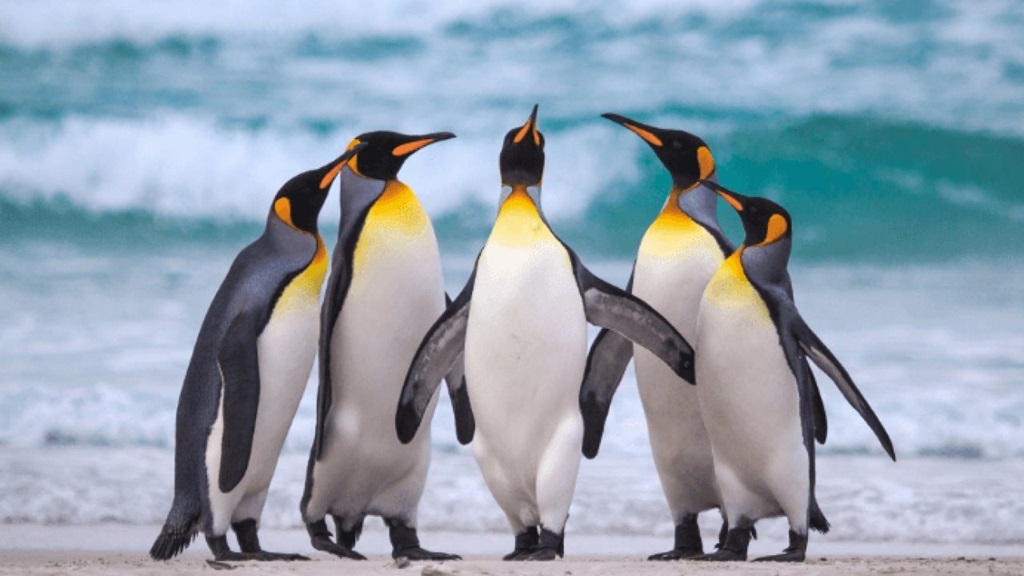
Emperor penguins are large in stature.
The emperor penguin, scientifically known as Aptenodytes forsteri, is the largest and heaviest penguin species living in Antarctica, with a height of 1.1 - 1.3 meters and a weight of 22 - 45 kg. They are endemic to Antarctica, especially in areas with year-round ice, adapted to temperatures below -50 degrees Celsius and winds stronger than 200 km/h.
Characteristics of emperor penguins:
- The back is glossy black, the belly is white and there are bright orange patches on the neck and ears.
- Wings evolved into swimming fins, unable to fly
- Short, dark gray legs, awkward but sure gait
- Main food is molluscs, fish, squid
- Lifespan 15 - 20 years
- IUCN Status: Near Threatened
King Penguin (Aptenodytes patagonicus)
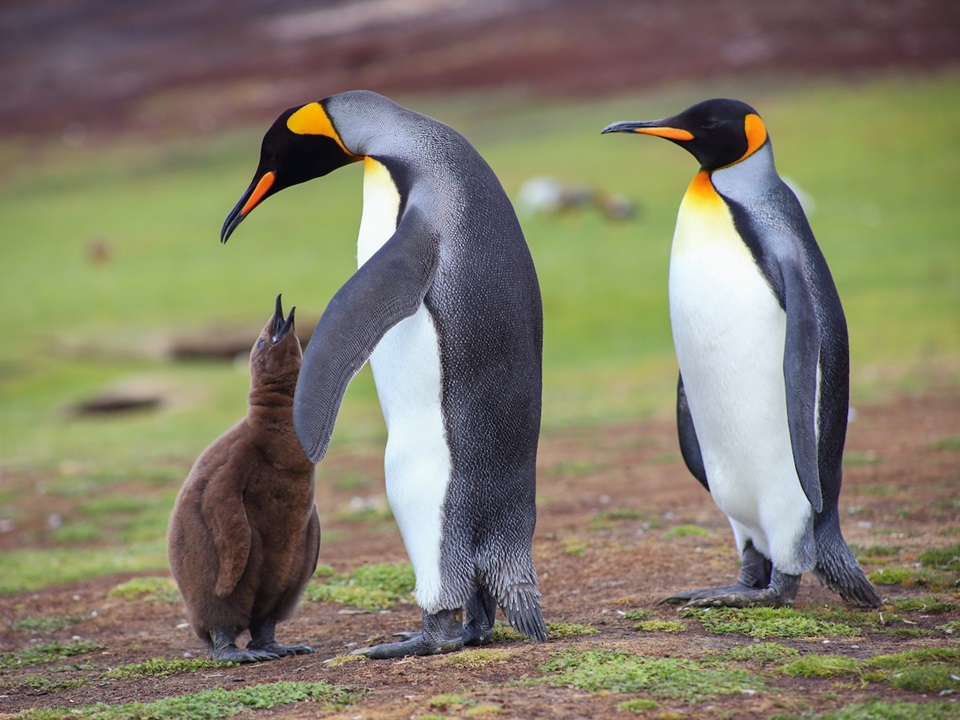
A family of king penguins.
King penguins, scientifically known as Aptenodytes patagonicus, are the second largest penguin species in the Spheniscidae family, after the emperor penguin. They do not live in Antarctica but are mainly distributed on sub-Antarctic islands, often living in large coastal colonies, where the climate is moderately cold.
Characteristics of king penguins:
- Height: 85 - 100 cm
- Weight: Average 11 - 16 kg
- The feathers on the back, head, and wings are dark gray, the belly is white, and the sides of the neck and chest have bright orange patches.
- The beak is long and slender, with two orange or light pink streaks on either side.
- Fairy wings turn into swimming fins, black legs, short tail
- IUCN status: Least concern, numbers stable, even increasing in many locations.
Adelie Penguin (Pygoscelis adeliae)

An Adelie penguin is lying "comfortably" on the ice and snow.
Adelie penguins, scientifically known as Pygoscelis adeliae, are penguins that live on the coast of Antarctica. They are notable for their white rings around their eyes and their small, active appearance. They are also known to be excellent swimmers and are the most aggressive and courageous of the penguin family.
Characteristics of the Adelie penguin:
- Height: 46 - 71 cm
- Weight: 3.6 - 6 kg
- The back and head are jet black, the belly is bright white, the eyes have prominent white rings, and the beak is short and black.
- Wings are fin-shaped, feet are light pink with strong claws for standing on rocks
- Super good swimming ability, can dive up to 150 meters deep. fierce and brave personality
- IUCN Status: Least Concern
Little Blue Penguin
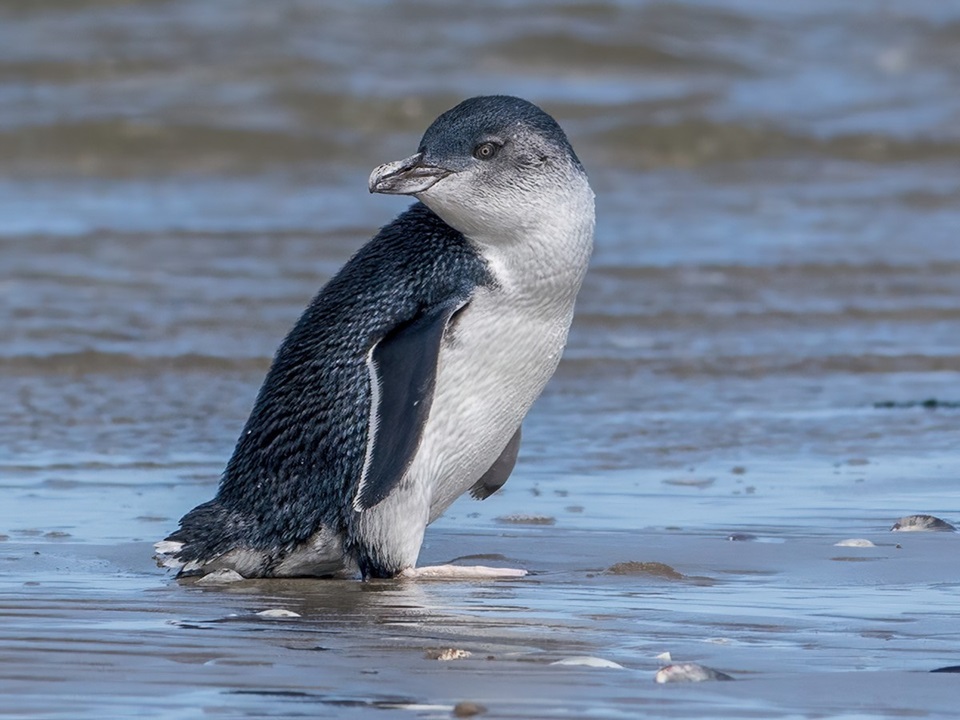
A little blue penguin with distinctive blue-gray feathers.
The Little Blue Penguin, also known as the Fairy Penguin, scientifically known as Eudyptula minor, is the smallest penguin in the world, found in coastal areas of New Zealand and southern Australia. They are called “Blue” because their feathers are a distinctive blue-gray color that is very rare in other penguin species.
Characteristics of the little blue penguin:
- Height: 30 - 33 cm
- Weight: 1 - 1.2 kg
- Back and head are blue-gray, dark blue, belly is white
- Eyes are silvery gray, beak is black, elongated, feet are pale pink, and have swimming webs.
- Favorite foods are small fish, squid, crustaceans
- IUCN Status: Least Concern
Galápagos Penguin (Spheniscus mendiculus)

Galápagos penguins gather on a rocky outcrop.
The Galápagos penguin, scientifically known as Spheniscus mendiculus, is endemic to the Galapagos Islands. They are also the only penguin species that lives near the equator, and have adapted by swimming constantly and resting in shade and caves to avoid the heat.
Galápagos penguin characteristics:
- Height: 49 - 53 cm
- Weight: 1.5 - 2.5 kg
- The back is black, the belly is white, the chest has a unique black horizontal stripe, the head is black with a white streak running from the eye to the neck.
- Good diving and swimming skills, often hunts near the shore
- Usually nest in rock crevices, earth cavities or volcanic caves.
- IUCN Conservation Status: Critically Endangered, estimated to have only 1,200 - 1,800 individuals remaining in the wild.
Interesting facts about penguins
Let's learn some facts about penguins shared below to understand more about this lovely bird.
- Although they are birds, penguins cannot fly because their wings have evolved into strong swimming fins that help them swim well and glide quickly underwater.
- Penguins are “excellent swimmers” – some species can even reach speeds of 36 km/h.
- All penguins live in the Southern Hemisphere.
- Penguins are very monogamous during the breeding season and even for life.
- Some species of rock penguins are known to offer their most beautiful stone to their mates as a real marriage proposal gift.
- Penguins have thick, waterproof feathers and a super-thick layer of fat to keep them warm.
Questions and answers about penguins?
Is a penguin a bird or a mammal?
Penguins are birds, but they cannot fly.
Penguins live in the north pole or the south pole
Penguins live only in the Antarctic and do not live at all in the Arctic.
Do penguins have ears?
Yes, penguins have ears but no ear flaps, just two small ear holes hidden under thick fur behind their eyes.
Why can't penguins fly?
Penguins cannot fly for several reasons:
- Wings evolved into swimming fins
- Heavy, long body
- Body structure evolved to suit life underwater rather than flying in the sky
Beautiful penguin pictures
Please enjoy the collection of super cute pictures of penguins shared below. We guarantee you will not be able to resist the cuteness of this flightless sea bird.

Image of a super cute emperor penguin family.

Super cute baby penguins.
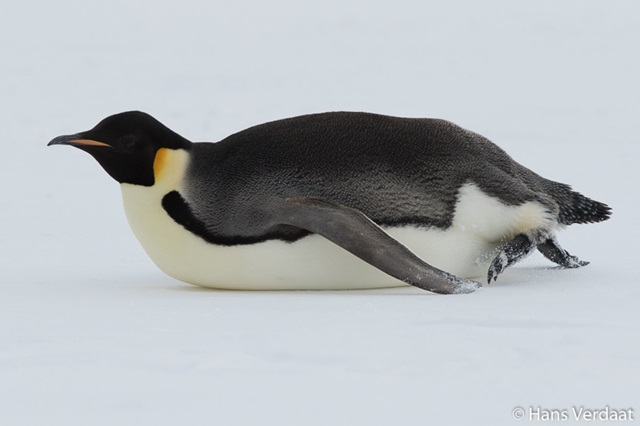
A penguin is sliding on the snow.
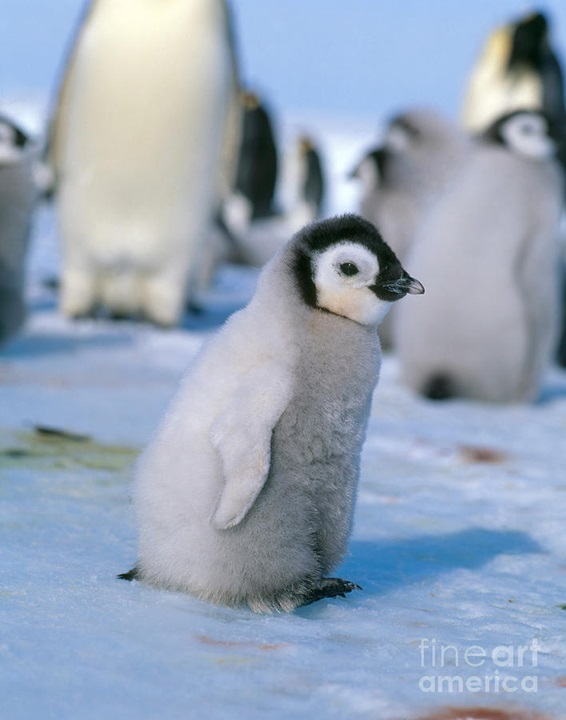
A super cute baby penguin.
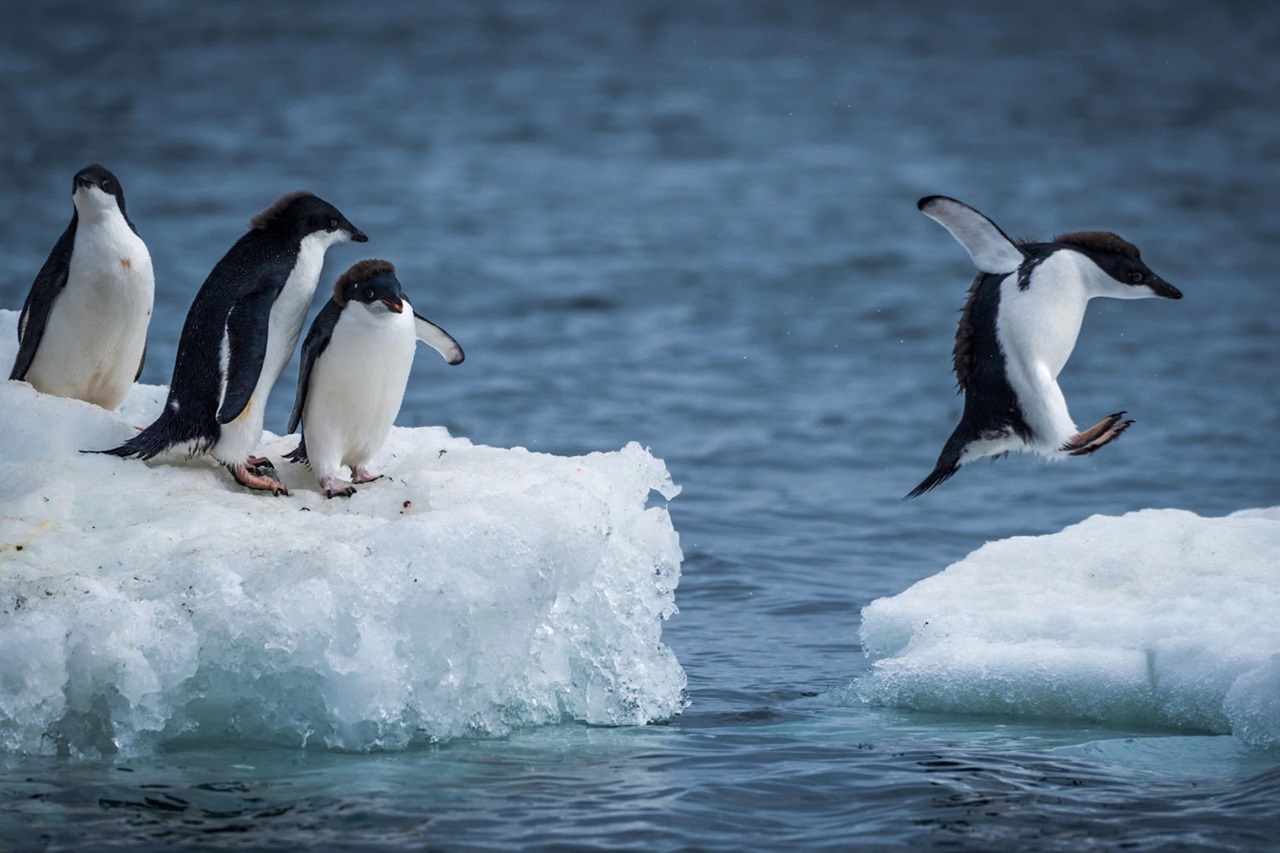
The penguins are jumping from one ice floe to another.

The penguins move in a straight line.
Through the above article, nicebirds.net has shared detailed information about penguins - cute little birds with a waddling gait but have excellent swimming ability. Currently, the number of penguins is decreasing due to global warming causing ice to melt at the two poles, leading to the loss of habitat for this bird species. Therefore, let's join hands to protect the environment to protect humans and other creatures.
Goodbye and see you again in other articles of the Blog section to learn more about other interesting birds.
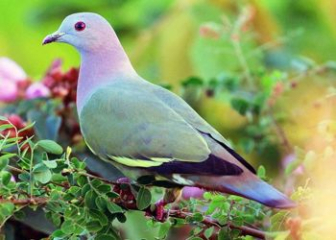
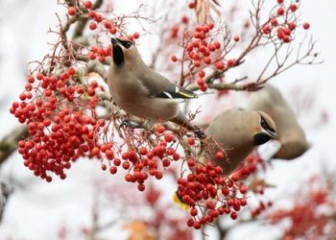
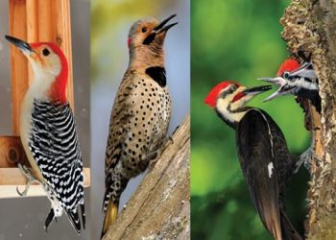

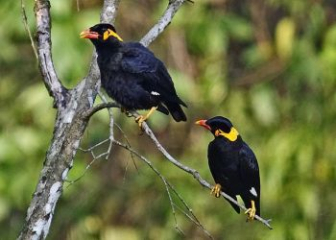
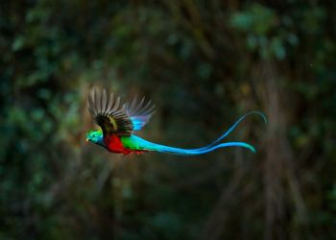
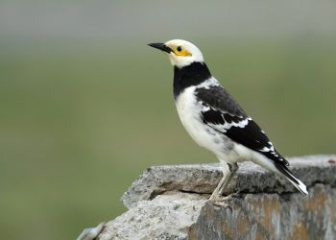
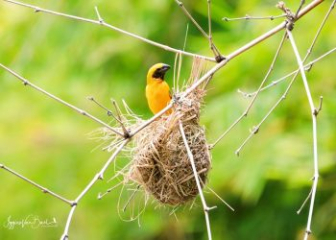
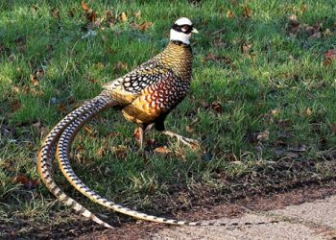
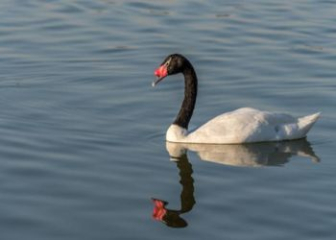
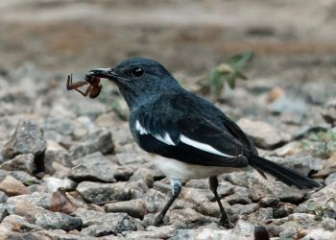
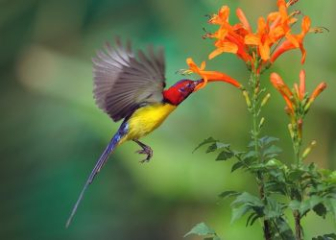
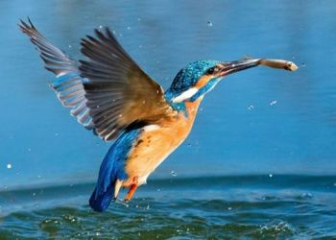
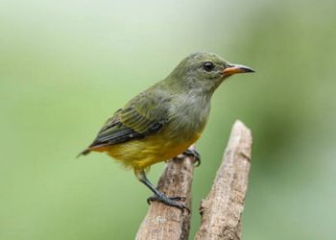
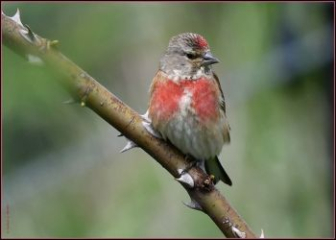
_350x250.jpg)
